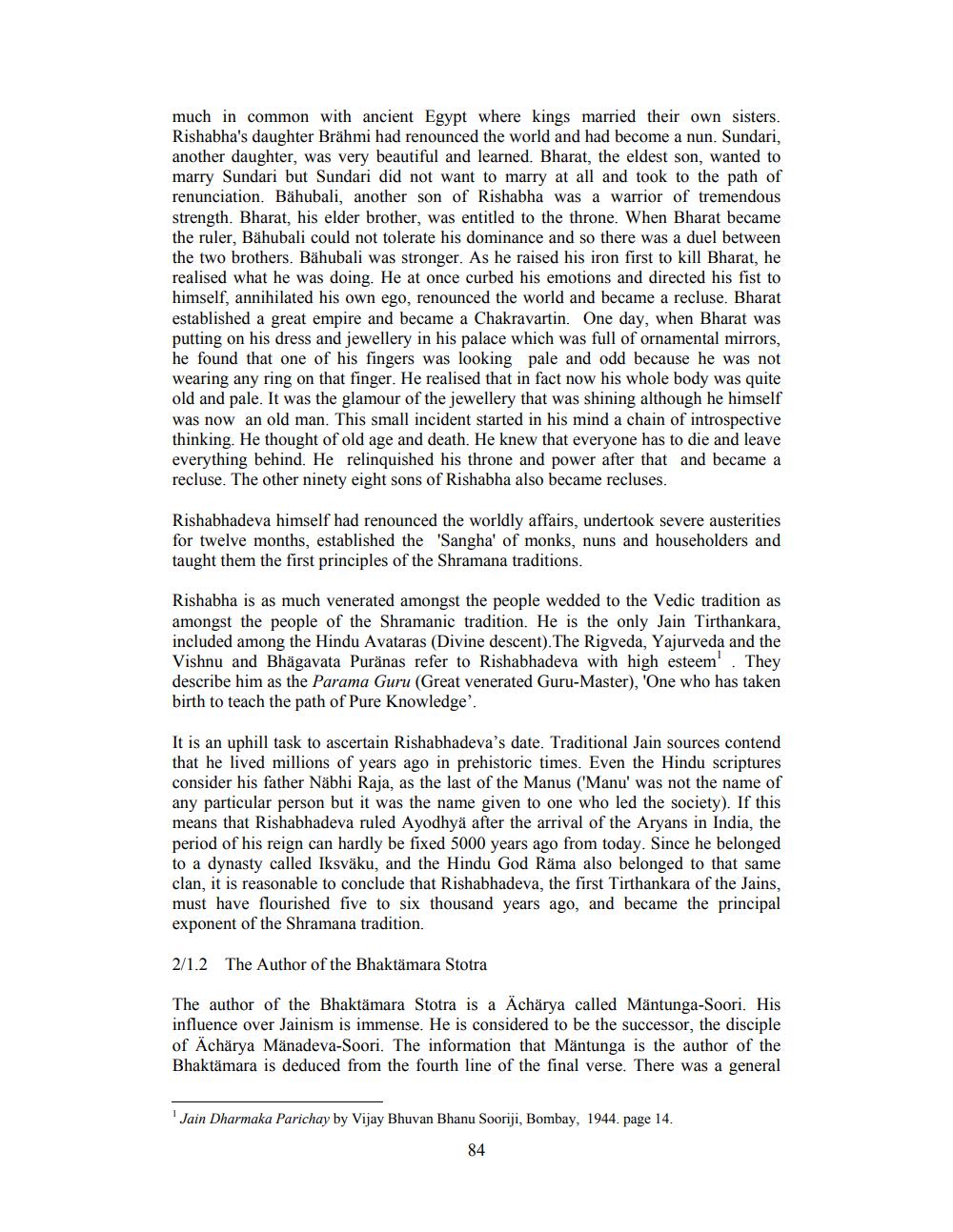________________
much in common with ancient Egypt where kings married their own sisters. Rishabha's daughter Brähmi had renounced the world and had become a nun. Sundari, another daughter, was very beautiful and learned. Bharat, the eldest son, wanted to marry Sundari but Sundari did not want to marry at all and took to the path of renunciation. Bähubali, another son of Rishabha was a warrior of tremendous strength. Bharat, his elder brother, was entitled to the throne. When Bharat became the ruler, Bahubali could not tolerate his dominance and so there was a duel between the two brothers. Bähubali was stronger. As he raised his iron first to kill Bharat, he realised what he was doing. He at once curbed his emotions and directed his fist to himself, annihilated his own ego, renounced the world and became a recluse. Bharat established a great empire and became a Chakravartin. One day, when Bharat was putting on his dress and jewellery in his palace which was full of ornamental mirrors, he found that one of his fingers was looking pale and odd because he was not wearing any ring on that finger. He realised that in fact now his whole body was quite old and pale. It was the glamour of the jewellery that was shining although he himself was now an old man. This small incident started in his mind a chain of introspective thinking. He thought of old age and death. He knew that everyone has to die and leave everything behind. He relinquished his throne and power after that and became a recluse. The other ninety eight sons of Rishabha also became recluses.
Rishabhadeva himself had renounced the worldly affairs, undertook severe austerities for twelve months, established the 'Sangha' of monks, nuns and householders and taught them the first principles of the Shramana traditions.
Rishabha is as much venerated amongst the people wedded to the Vedic tradition as amongst the people of the Shramanic tradition. He is the only Jain Tirthankara, included among the Hindu Avataras (Divine descent). The Rigveda, Yajurveda and the Vishnu and Bhagavata Puränas refer to Rishabhadeva with high esteem'. They describe him as the Parama Guru (Great venerated Guru-Master), 'One who has taken birth to teach the path of Pure Knowledge'.
It is an uphill task to ascertain Rishabhadeva's date. Traditional Jain sources contend that he lived millions of years ago in prehistoric times. Even the Hindu scriptures consider his father Näbhi Raja, as the last of the Manus ('Manu' was not the name of any particular person but it was the name given to one who led the society). If this means that Rishabhadeva ruled Ayodhyä after the arrival of the Aryans in India, the period of his reign can hardly be fixed 5000 years ago from today. Since he belonged to a dynasty called Iksväku, and the Hindu God Räma also belonged to that same clan, it is reasonable to conclude that Rishabhadeva, the first Tirthankara of the Jains, must have flourished five to six thousand years ago, and became the principal exponent of the Shramana tradition.
2/1.2 The Author of the Bhaktämara Stotra
The author of the Bhaktämara Stotra is a Ächärya called Mäntunga-Soori. His influence over Jainism is immense. He is considered to be the successor, the disciple of Ächärya Mänadeva-Soori. The information that Mäntunga is the author of the Bhaktamara is deduced from the fourth line of the final verse. There was a general
Jain Dharmaka Parichay by Vijay Bhuvan Bhanu Sooriji, Bombay, 1944. page 14.
84




